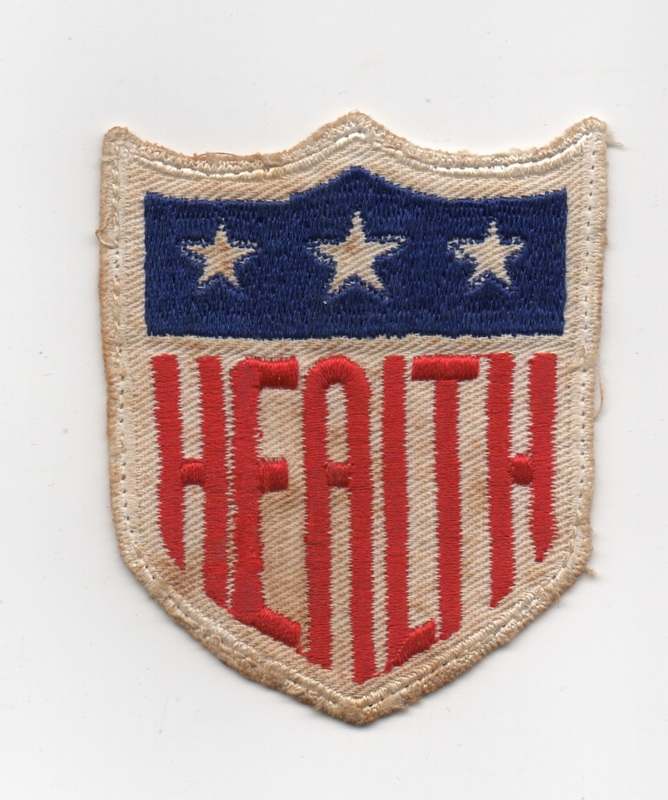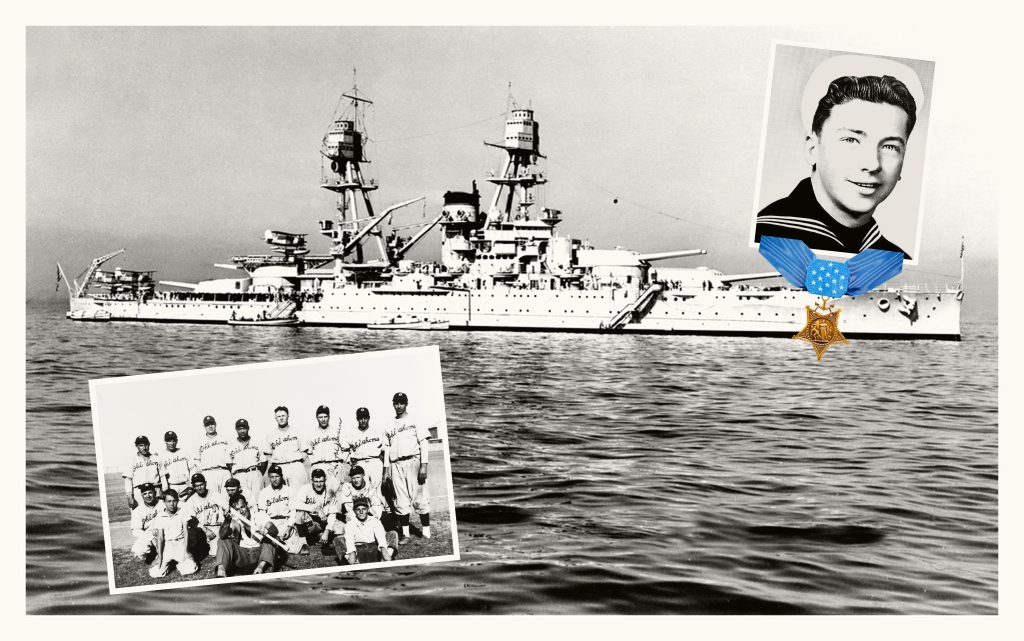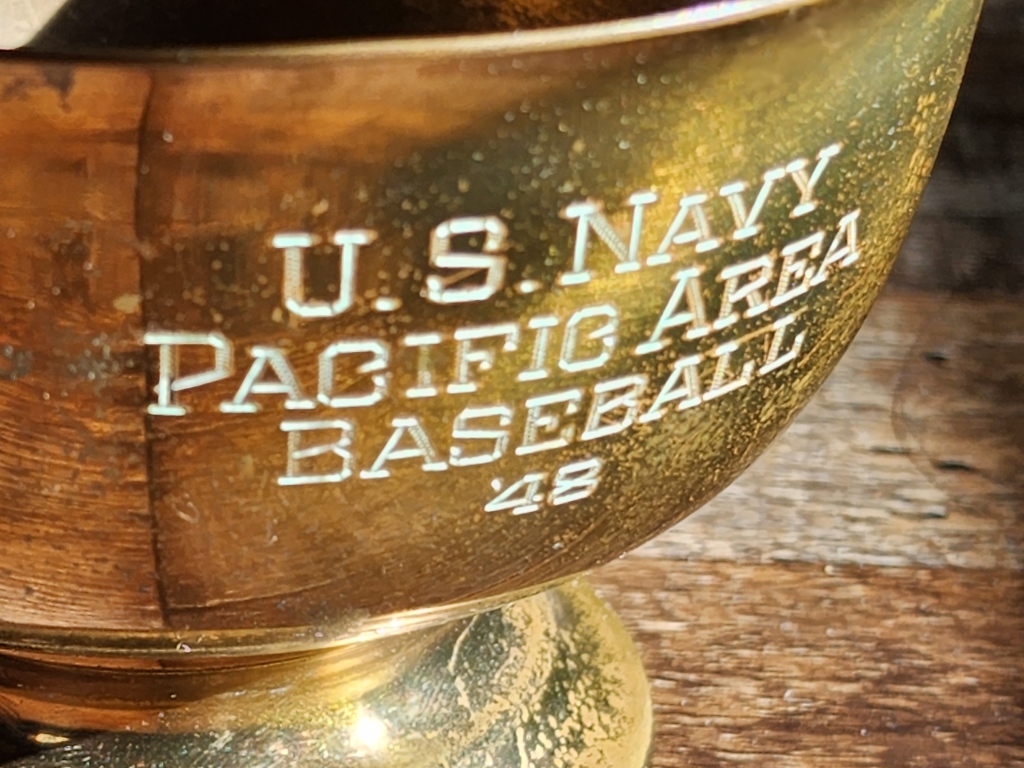Not long ago, my wife asked me what my goal was in terms of militaria and baseball collecting. I know that she asked this question with the utmost sincerity and respect for this interest that I have in these areas of history. The question is not something that I haven’t already asked myself in some manner or fashion as I try to understand what, within myself, causes me to look at different artifacts that become available. I often ask myself, “Is this piece in line with what you have been acquiring and researching?” I spend time analyzing what it is driving my interest in a piece before I start to consider the expense, space to preserve and house it or if the item is authentic.
Space is at a premium in our home. We live in a modest (not small, but not large) and we have kids who also require space for their various activities which translates to not having an area for displaying artifacts. I have seen some incredible mini-museums that other collectors (both in the militaria and baseball collection areas of focus) that rival some of the best museums around the country. These collectors are so incredibly diligent, resourceful, patient and meticulous in acquiring the right balance of artifacts to create complete displays that convey the story while not overwhelming the viewer with sensory overload. Even if we had the space within our home, I am not certain that I would take this tack with my collection.
In attempting to collect my thoughts to respond to my wife’s question, I wanted to convey to her (an myself) that what I focus my interest in is very specialized and that while the mailbox and front porch (at times) is barraged with a stream of packages (“is that ANOTHER piece for your collect?”), I don’t really have much coming to the house. This thinking could be construed as justification which is not what I want to convey to her. As I analyzed my thoughts, I wanted to mention that in terms of my highly selective focus leaves me wanting to preserve those artifacts that fit the narratives of my collection but also, if I didn’t purchase them, could be relegated to sitting in a plastic bin, long forgotten for decades. That too, sounds like an excuse.
This past summer as I prepared to display a selection of my U.S. Navy uniform artifacts, I selected specific pieces to demonstrate the overall theme of the display. I chose to be limited in what would be shown, taking the less-is-more mindset. I could have filled the display case from top to bottom but instead, I wanted viewers to see each piece and enjoy them individually and as a whole. As I continue with my interests, this is the approach that I have been and will continue to take. That each piece that is added to my collection will be thoughtfully considered, individually as well as how it fits into what I already have.

A few weeks ago, a patch was listed for sale (shown above) by a fellow militaria collector that received it from the son of a WWII veteran. Another collector suggested that the patch was worn on a baseball uniform as it resembled one that was common on major and minor league baseball uniforms, starting in 1942.

With the War in full swing and after suffering some substantial challenges (Pearl Harbor, the Philippines, Wake Island, Guam, the USS Houston, etc.) the United States was still ramping up to get onto the offensive against the Axis powers. Following the Pearl Harbor sneak attack, young men flocked to the armed forces recruitment offices, including in their numbers, several stars from the ranks of professional baseball. Leaders within all spheres of our nation (political, business, entertainment, churches, etc.) were almost unanimously patriotic and working together to hold our citizens and service men and women together for the common goal of defeating the fascist enemies. Aside from the rationing (food, textiles, gasoline, electricity) and recycling (predominantly metals) campaigns that commenced, recognizing the need for Americans to be physically fit and health-conscious in order to fight, build and farm – in other words, produce – for the War effort. Professional Baseball, in response to the call, embraced the physical fitness message and began to share it on their uniforms with the Hale – America Initiative Health patch.


While I have found a handful of photographs depicting variations of the Health patch (a shield shape with stars and stripes) on wartime uniforms, I have only found one image with a variation of the patriot patch in place. In my growing archive of vintage military baseball photographs (numbering over a hundred) contains only a single image with players wearing a shield patch. The baseball uniform of the Naval Air Station, Jacksonville ball club, in addition to the beautiful chenille logo on the left breast, has one of the patches affixed to the left sleeve. Due to the high contrast exposure of the photograph, it is impossible to distinguish the variation – there is an unrecognizable inset shield-shaped (white) field that is centered, superimposed over the vertical stripes.

While it is certainly possible that the patch that was being sold was worn on a military baseball uniform during WWII, I didn’t want to commit the financial or storage space resources to something that I would have a hard time authenticating. Without photographic evidence to back up the assertion of usage on service team uniforms, this patch is nothing more than a (seemingly) vintage patriotic, multi-layered wool-flannel constructed emblem (which I actually find visually appealing). Without practicing a measure of restraint, caution and requiring (of myself) provenance, I would have committed to purchasing the patch and adding it t
o my short list of to-be-researched militaria. However, I needed to be more discerning with my interests and, in answering the question in regards to my collecting goals, I passed on the opportunity to add the patch to my collection.
I am still attempting to answer my wife’s question regarding my collecting goals with a well-thought out response however, I would assert that my actions just might speak more clearly than any words could offer.




Leave a comment